A lot of interest has recently been given by clothing historians to the subject of women’s underclothes through time. It is, after all, something that we can all relate to, right? Maybe not. When one looks at the bustle, crinoline, and even whalebone corsets, for instance, we are truly looking at cultural artifacts from the past that have yet to penetrate contemporary fashion (current corsets have a definite comfort factor to their design).
The bustle is a part of women’s fashion history that has always spiked my curiosity. It interests me that the idea of creating a silhouette so specific, and so audaciously unlike the human form was such a priority in much of mainstream white American society. It fascinates me to consider our silhouette standards today, which are so polar opposite in the sense it promotes the idea of a less-visible female form than the bustle did. The crossover of fashion and the women’s rights movement is a topic for another post, however.
I’ve done some reading on the rise and fall of the bustle this winter and today I am sharing a brief outline with you. Please let our team know if you’d like help creating a bustled look of your own.
First of All, Why the Bustle?
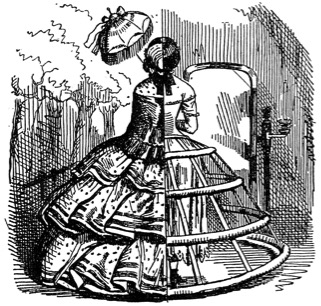
Some of our readers will be well aware of the momentary popularity of crinoline; the large, hoop-shaped stand wear worn underneath women’s dresses during the mid-1800s. Technically a type of petticoat, the crinoline was made of stiff material, often a combination of steel and horsehair. The desired look was the widest skirts the human race has ever seen with some reaching to six feet in diameter. Think Scarlett O’Hara’s gowns in the opening scenes of Gone With the Wind.
While popular, the crinoline was also dangerous, uncomfortable, and horribly impractical. Recent dress historians estimate that thousands of women lost their lives to various crinoline mishaps, mostly fire-related. The trend quickly moved toward a look that was less bell-shaped and circling the body to one that was flattened in the front and sides and raised in the back.
The First Phase: Getting the Shape Right
Though the bustle was first patented in 1857, the popularity of crinoline prevented it from taking off until the 1860s, as the caged petticoat evolved and then disappeared to more appropriately accommodate the realities of women’s lives. The first versions were worn low, made to encourage a flowing train (see images to the right). They were typically constructed of steel and cotton and worn by tying or buckling around the front of the waist. The focus of the dress was largely on the train, ruffles on the bottom of the dress, and the bodice.
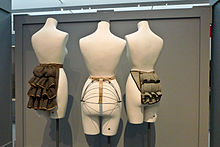
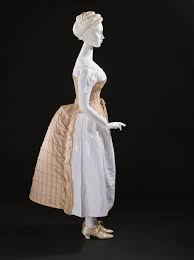
The Second Phase: Embellish that Bump!
The late 1860s saw the home sewing machine becoming commonplace and the focus shifted toward the decoration of a gown rather than its wingspan. While the emphasis remained on the back of the dress, the 1870s saw attention given to embellishments of the train, and while elaborate, many were found in the area of the skirt beneath the knees. The bustle thus ceased to be standard pieces of a woman’s wardrobe for a time. The image to the right is one example of this shift.
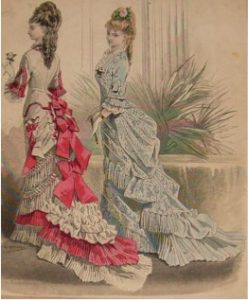
By the 1880s the embellishments had begun to move upward once again, as designers looked for more space to adorn and get creative. The bustle came back, and it came back with a vengeance.
This second phase of the bustle took place during what Victoriana calls the “severely tailored figure” of the late 19th century. The bustle was worn on top of a tightly bound corset and designed to support the weight of as many waves of cloth as could be managed and embellishments to go along with it. We’re talking pleats, ruffles, bows, and all manner of fabric explosion. The bustles of this era were what I call industrial-strength made to support the weight of the rear and it’s flounced appearance. The bodices would have come in a variety to suit the figure and style of the wearer, but almost always worn with a high neck.
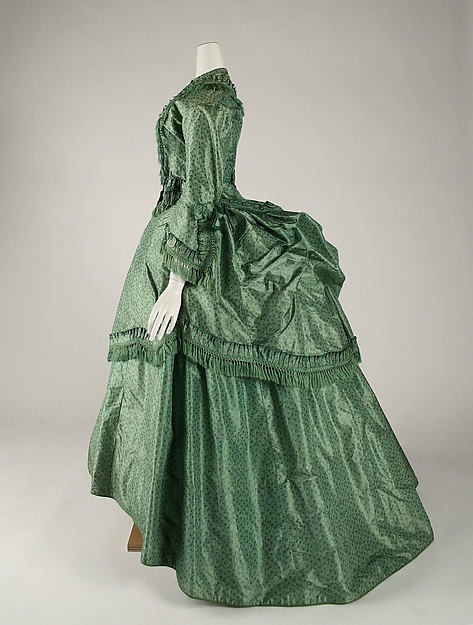
I would love to add one of these bustles to my collection!
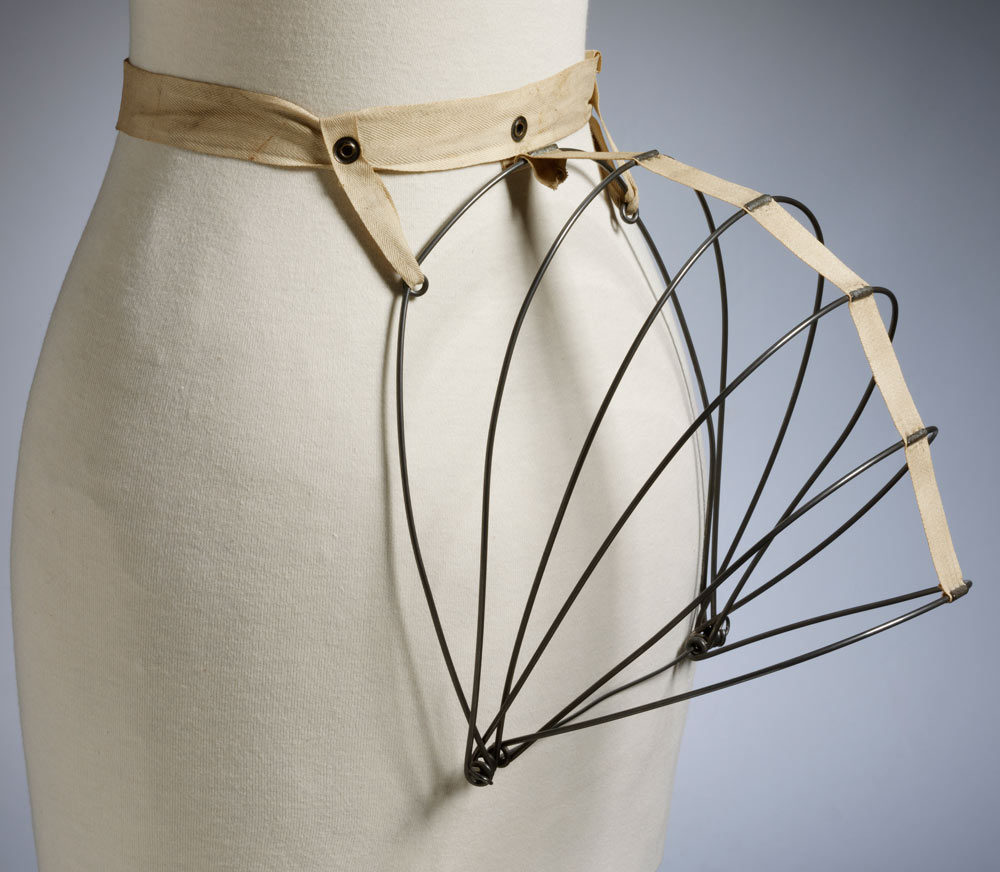
The Third Phase: The Corset Reigns
If you haven’t been convinced of the extreme nature of women’s fashion at the end of the 19th century consider this: an entire organization was formed in 1881 to spread awareness of the dangers of such clothing. Organized as the Rational Dress Society, the group’s mission was to protest “against the introduction of any fashion in dress that either deforms the figure, impedes the movements of the body, or in any way tends to injure the health.” Tight-fitting corsets and “heavily-weighted” skirts were primary targets.
Perhaps they were on to something. Such fashions proved unsustainable, especially with women increasingly bursting into public life as the 20th century approached. While the bustle had a good run, the 1890s found women desiring greater mobility and dresses became more tailored with each passing year. The bodice evolved at a much slower pace while the skirt deflated. Any need for shaping was left to the responsibility of the corset, which still maintains a presence in women’s Western fashion today.
Want to learn more about silhouettes through time?
Achieving the Gibson Girl S-silhouette: it’s all about the padding
Want a Regency-inspired fall? Try a Spencer jacket
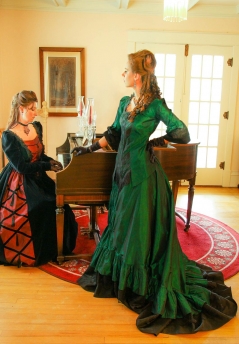
You can view bustle-era-inspired styles by Recollections here.

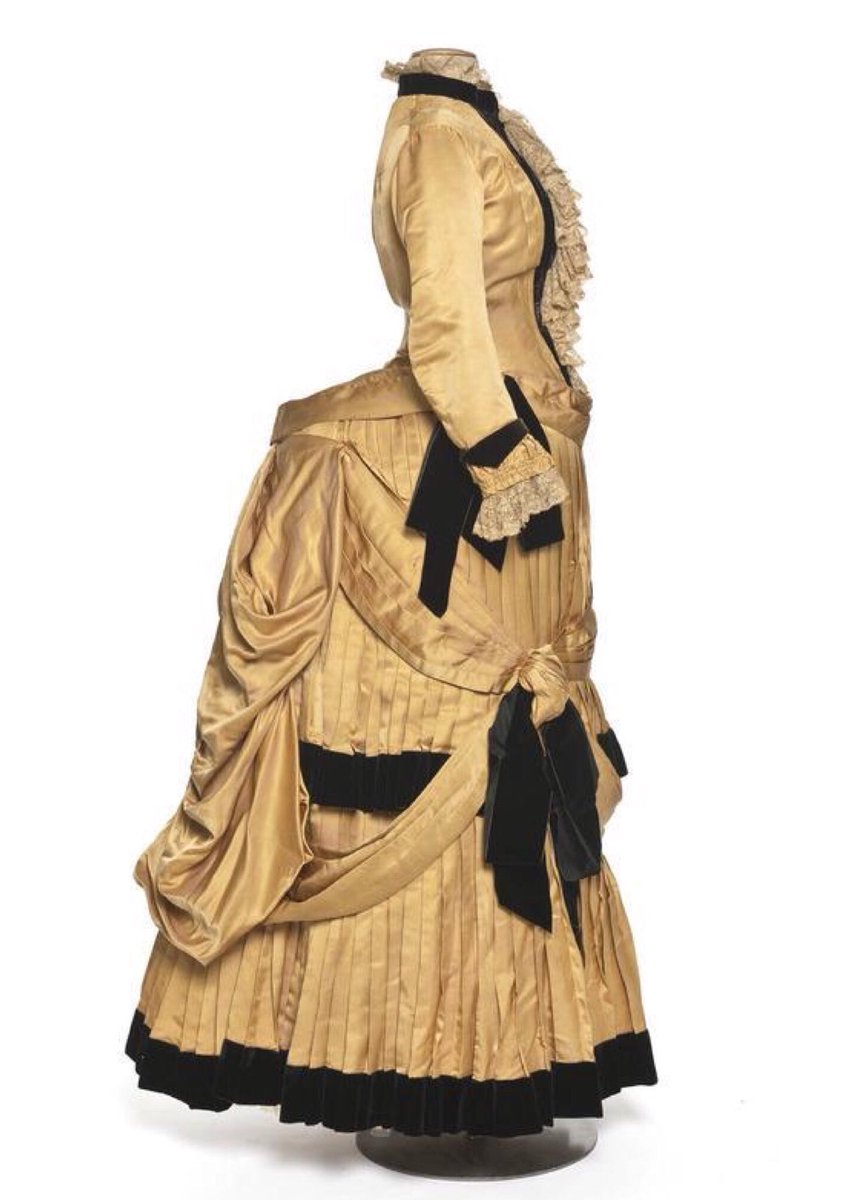












As someone that has sewn, and worn, historically accurate clothing for close to 20 years, I can agree that bustle outfits are definitely heavier to wear than some other historical outfits I have. They are easier to be in than the super-large Antebellum style skirts. However, neither weigh anything close to my Tudor outfit – now that is a heavy one!
When I went to the National History Museum in NYC, maybe 10 years ago, there was a exhibit about women’s fashions by the decade. We read a most interesting placard. With the war ramping up, the military leaders were looking for new metal sources. They found the metal they needed in bustles. The fashion changed and women were freed.
You aren’t alone! The podcast Dressed has done an episode on the use of female undergarments to smuggle in contraband from overseas. Check out their episode ‘Smuggled in the Bustle.’
And I keep thinking….how much contraband could be smuggled.
Thanks again for the excellent write-ups!
I love this. I never gave much thought to the weight of dragging all of that around.
Thank you so much for reading, Carol! I am also a fan of this dynamic and quickly-changing period of women’s fashion! I am so glad you liked the post and also that you love our clothing!
I always learn something new from these posts! I love the history of American clothing of the 1830 to late 1910’s time period as much as I love my clothing purchased from Recollections. Please continue to enlighten us.